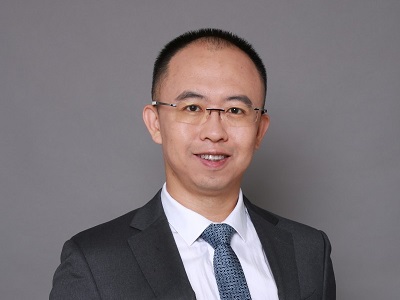LexisNexis launches new tool for cleaner SEP data
The US information and data service company LexisNexis has launched a new tool to clean up data for 5G patents. The tool should aid companies for issues such as licensing negotiations and FRAND-rate determination. However, it is unlikely to solve important problems such as the over declaration of SEPs or the essentiality check.
24 January 2025 by Mathieu Klos
LexisNexis Legal & Professional has launched the ‘Cellular Verified’ initiative. According to the company, through a year-long collaboration with major SEP holders in the telecoms sector, LexisNexis was able to achieve 99.9% data accuracy by matching, cleaning, enhancing, and verifying its database of patent families with the data in the ETSI database.
The European Telecommunications Standards Institute is the world’s most important institute for the declaration of standard essential patents. Patent holders can introduce their patents into a standard via the institute. The problem, however, is that ETSI does not check whether the patents are really relevant to the standard. It also does not determine the patents’ economic value, which often leads to lawsuits if the companies cannot agree on a rate for a licence.

Tim Pohlmann
The initiative also addresses inconsistent data. “Patent declaration data is inherently inconsistent, shaped by each company’s unique declaration practices,” says analyst Tim Pohlmann from LexisNexis Intellectual Property Solutions.
Sharp increase in 5G patents
“If such self-declarations are not rigorously cleaned and verified, the data favours companies that provide more detailed and cleaner information, resulting in a systematic bias,” Pohlmann adds.
Many ETSI-declaring companies now self-declare patents at the earliest possible stage, frequently including unpublished provisional or priority numbers. This process introduces significant variability, as companies follow different approaches when declaring their patents. For example, companies often submit patent numbers in varying formats and types, states LexisNexis in a press release.
According to Lexis Nexis, 40% of self-declared patents cannot be directly matched to normalised and cleaned patent information. Roughly 20% of matched numbers result in false positives due to the ambiguity of patent numbers.
A recently published LexisNexis survey showed the number of granted 5G patent declarations has more than doubled in the past three years. The survey counts slightly more than 25,000 declared 5G granted patent families in 2021. The number increased to over 57,000 patent families in 2024.
Better data for negotiations
The data cleansed by the Cellular Verified initiative is intended to help companies find solutions, especially during licensing negotiations and FRAND rate determinations.
“Cellular Verified directly addresses these challenges by delivering clean, standardised, and validated patent declaration data, ensuring stakeholders can rely on a trusted and impartial source for critical decisions,” says Pohlmann.
The analyst is founder of IP Analytics. LexisNexis took over the Berlin-based company in November 2022. Today, Pohlmann is managing director Americas and director of SEP analytics for LexisNexis Intellectual Property Solutions.
As part of the initiative, data is compared and cleansed with the ETSI data in a four-stage process. The first step involves matching and cleaning data. Further steps are Expanding Family Coverage, Classifying Patents by Standard Generation, and Enhancing Ownership Data.
Huawei leading the 5G race
According to LexisNexis, Cellular Verified is a first-of-its-kind collaboration with over 30 of the top 5G patent-holding companies with the aim of improving the accuracy of patent declaration data.
LexisNexis does not disclose the names of the companies in the collaboration.
Only Huawei has publicly declared its commitment. “Our industry has long faced challenges with gaps, redundancies, and errors in patent declaration data, which can lead to inefficiencies in licensing and disputes,” says Alan Fan, vice president and head of IPR department at Huawei. “Our collaborative work with LexisNexis Intellectual Property Solutions on the Cellular Verified initiative has significantly strengthened the accuracy of patent declaration data for all stakeholders.”

Alan Fan
However, the LexisNexis report “Who is Leading the 5G Patent Race?” provides information about the leading companies in the 5G standard. Accordingly, Huawei, Qualcomm and Ericsson hold the top three positions in 5G patent ownership.
The other top 30 companies in the ranking include well-known companies such as Apple, Intel, InterDigital, Lenovo, Nokia, Oppo, Panasonic, Samsung, ZTE and Xiaomi. Many of these companies have been party to intensive SEP litigation before European courts in recent years.
Various experts see the uncontrolled over-declaration of SEPs as a reason for why licensing negotiations fail, leading to subsequent litigation in patent courts.
No competition with EU competence centre
The current situation regarding SEPs is also a thorn in the side of the EU Commission. The EU Parliament adopted its plan for SEP regulation in Europe in February 2024 and it is now before the EU Council. With Poland’s new council presidency, the EU member states are now more likely to address the EU Commission’s proposal, despite a recent lack of interest from the Hungarian government.
One of the key proposals is a competence centre, which would carry out non-binding essentiality checks. A FRAND rate determination by mediators would be mandatory, if non-binding, before parties can then litigate in UPC countries. SEP owners would be prohibited from enforcing their SEPs against implementers in court during the centre’s examination.
The extent to which cleansed data from the Cellular Verified initiative could help here is unclear. In any case, an essentiality check is not part of the initiative.
Whether parties can use the improved data in court proceedings is unclear. It is more likely to lead to faster licence agreements and thus help parties avoid litigation.